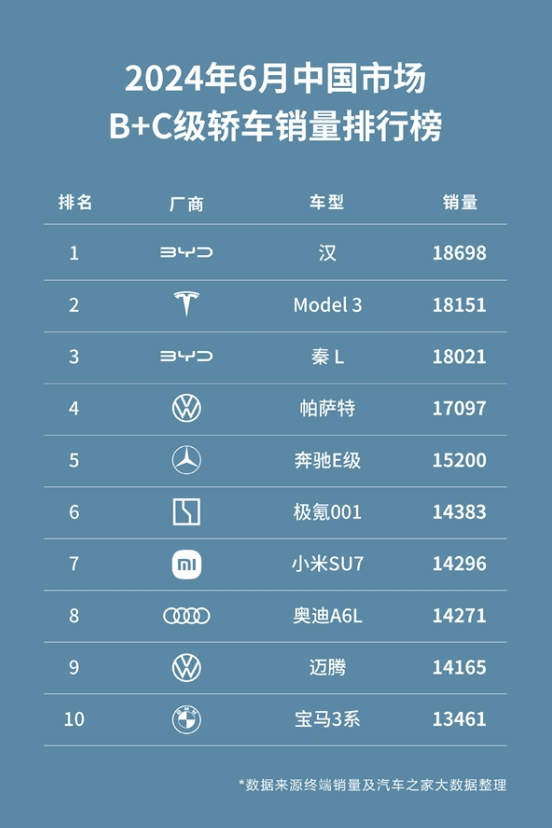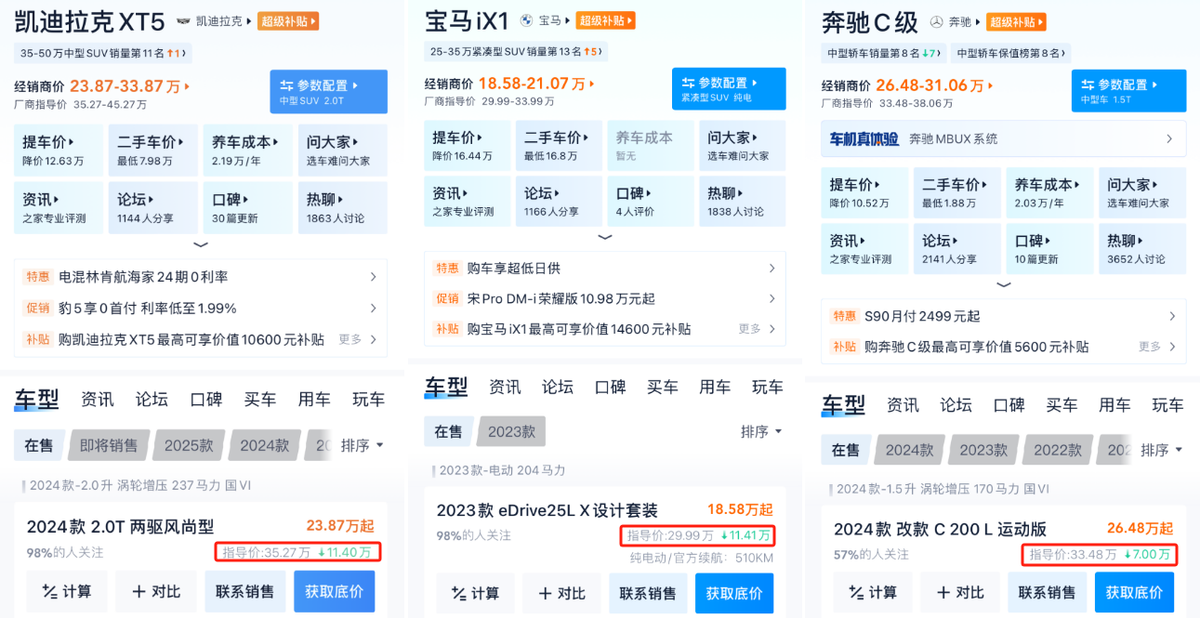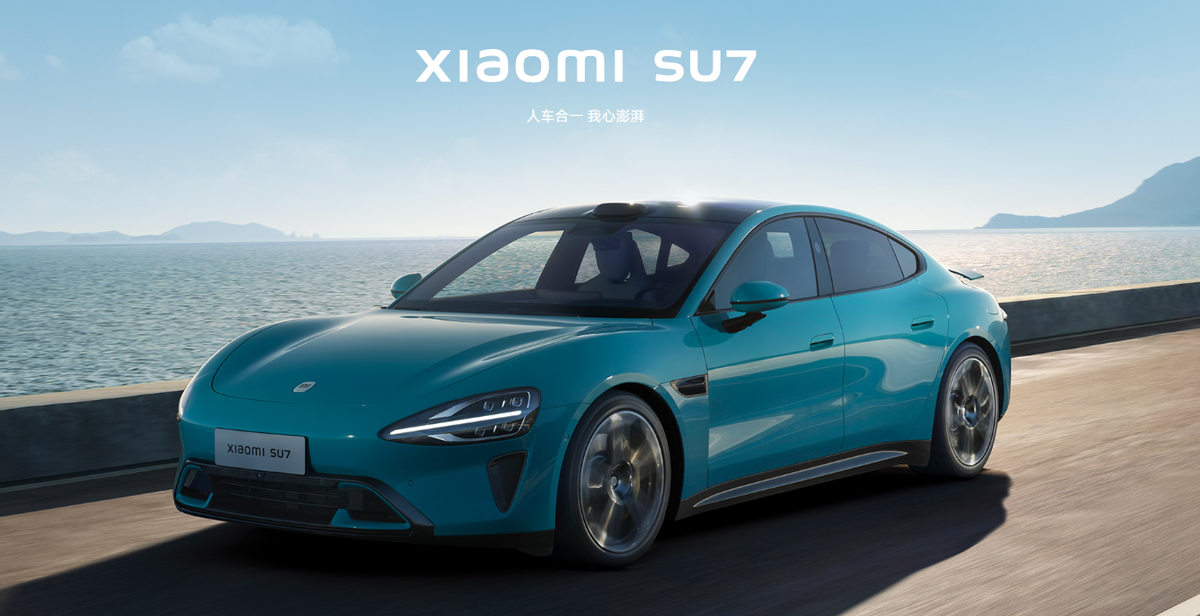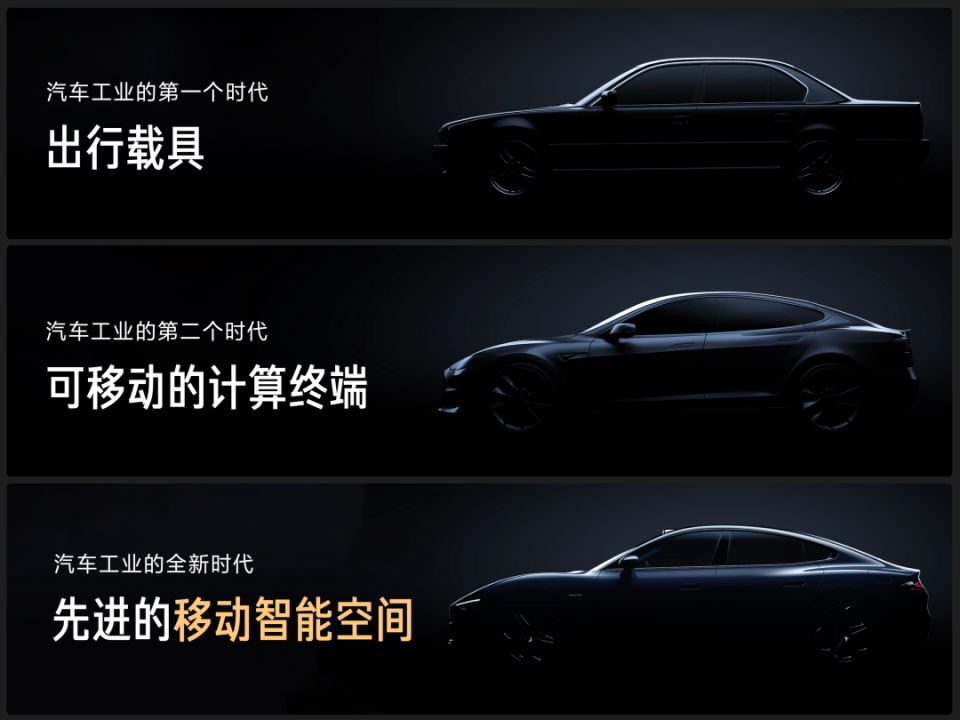Luxury Car Market Shuffle: Xiaomi Emerges as a Market Disruptor
![]() 07/15 2024
07/15 2024
![]() 563
563
Cervantes once said in Don Quixote, "Don't imagine that the world remains unchanged forever."
Recently, BYD's sales ranking for B+ and C-segment sedans in the Chinese market for June 2024 illustrates this point.

The ranking data shows that five of the top 10 models are new energy vehicles, with four being domestic brands: BYD Han and Qin L occupy the first and third spots respectively, with monthly sales of nearly 20,000; ZEEKR 001 ranks sixth, and Xiaomi SU7 ranks seventh.
Even traditional luxury car brands like Audi are no longer as dominant as before. ZEEKR 001 and Xiaomi SU7, with sales of 14,383 and 14,296 respectively, outpace Audi A6L. It is evident that the landscape of the domestic medium and large luxury car market is changing.
"Seismic Shift" in the Luxury Car Market
Since 2023, a large-scale "price war" has swept across the automotive market, and even luxury brands have not been spared. Recently, several luxury gasoline-powered vehicles have seen significant price cuts, with the Mercedes-Benz C-Class dropping by 70,000 yuan to 264,800 yuan; the Cadillac XT5 by 114,000 yuan to 238,700 yuan; and the BMW iX1 by 114,100 yuan to 185,800 yuan.

Image source: Autohome
The intense price war continues, disrupting traditional luxury brands like BBA. However, even drastic measures have failed to secure survival space, with sales declining significantly and target customers still lost. Official data shows that in the first quarter of this year, BMW sold 187,500 vehicles in the Chinese market, a year-on-year decline of 3.8%, while Mercedes-Benz sold 168,900 vehicles, a year-on-year decline of 11.6%.
Behind the decline in traditional luxury gasoline-powered vehicle sales, the "lost" market share has been fully captured by new energy vehicles.
According to data from the China Passenger Car Association, from January to April this year, the three fastest-growing segments in the new energy vehicle market were the 300,000-400,000 yuan, 200,000-300,000 yuan, and above 400,000 yuan price ranges, with year-on-year growth rates of 68.3%, 47.6%, and 34.4%, respectively, contributing to an incremental sales of nearly 280,000 vehicles.
Amidst this shift, the advantages of electrification have further fueled the rise of domestic luxury brands like Lixiang and NIO, accelerating the localization process. Multiple representative automakers have emerged in the domestic market, such as Lixiang, focused on family cars; NIO, emphasizing premium intelligent driving; and Zero Run, pursuing ultimate cost-effectiveness.
Under healthy market competition, the supply side has become increasingly abundant, driving down the cost of complete vehicles. The rapid development of new energy vehicles has forced overseas luxury brands to keep pace with domestic ones. Mercedes-Benz and BMW have successively launched new energy models to fill market gaps, but their sales have not regained past glory.
Relevant data shows that in the second quarter of this year, the cumulative sales of Mercedes-Benz's EQS and EQE, two electric flagship SUVs, were only 2,556 units, a significant year-on-year decline of 57%. In May, Audi Q5 e-tron sold only 400 units.
Moreover, the luxury car market has high barriers to entry in terms of technology and demand. Domestic luxury car brands that have successfully broken through have clear self-value propositions and the ability to continuously innovate.
AITO, known for its intelligent driving capabilities, leverages Huawei's mobile phone brand power, establishing a strong market position in intelligent technology. NIO, centered on community marketing, provides comprehensive services, building a remarkable brand image. BYD, with multiple core technologies self-developed and aimed at establishing a luxury brand, continues to dominate the new energy market.
The moat around domestic luxury car brands is now evident, making their stronghold "easy to defend but hard to attack." It will only become increasingly difficult for traditional luxury car brands to regain past glory.
After the Marketing Hype Dies Down, What Supports Xiaomi's Resilience?
Among the June B+ and C-segment sedan sales rankings, Xiaomi was the "youngest" brand. Lei Jun once said, "I'm willing to bet my entire reputation to fight for Xiaomi Automobile."
Whether these words are mere hype or heartfelt declarations, Xiaomi has transformed from rumors to myth. From its launch on March 28 with over 10,000 bookings in 4 minutes to Xiaomi SU7's monthly sales exceeding 10,000, even surpassing the traditional luxury brand Audi A6L.

Image source: Xiaomi Automobile official website
Behind Xiaomi Automobile's rapid rise, changes in the luxury car market have played a significant role. The trends of electrification and intelligence have brought traditional luxury brands down from their pedestal, putting everyone back on the same starting line.
Lixiang and Huawei have redefined the intrinsic value of medium and large SUVs, while Xiaomi SU7 has introduced a new pricing logic for pure electric sports sedans. Amid intense competition in products, prices, and traffic, the underlying demand in the domestic luxury car market is shifting from the pursuit of luxury and prestige to the redefinition of high-end through intelligent driving and cockpit technologies.
Based on this, Xiaomi Automobile has successfully stood out with its outstanding driving performance, including a 0-100 km/h acceleration of 2.78 seconds and a maximum horsepower of 673PS, as well as intelligent black technologies such as HUD and a comprehensive human-machine ecosystem.
Secondly, Xiaomi understands young consumers well, balancing their strong willingness to consume with limited spending power through the "psychological compensation effect." Xiaomi SU7 mimics Porsche in appearance, benchmarks Tesla Model 3 in performance, and offers a surprising price point, showcasing Xiaomi's shrewdness in "doing big things with little money."
Furthermore, Xiaomi Automobile excels at attention to detail, summarizing the advantages and disadvantages of competitors' products to create an "all-rounder." The car is equipped with Xiaomi's Puff OS, which can integrate numerous Xiaomi ecosystem products. The seatbacks support hardware ecosystem expansion for added fun, while the front armrests have built-in flashlights and phone mount installation holes, complemented by double-layer silver-plated sunroofs and windshields.
Today, the hype surrounding the new car launch has faded, and Xiaomi Automobile has firmly established itself in the market with its strength.
China's Comprehensive Surpass in Manufacturing
Xiaomi Automobile's surpassing Audi may be a signal that significant changes in the automotive market have arrived.
As an enterprise that rose during the Internet era, Xiaomi's core business model is "hardware + Internet services," first acquiring high-stickiness users through hardware sales and then providing Internet services to boost overall operating profits.
Building on Xiaomi Group's rich experience and technological accumulation in the smart ecosystem field, Xiaomi Automobile will continue this "gene" after entering the automotive industry.
In contrast to the past, the traditional automotive industry primarily relied on selling cars for profit, while Xiaomi's Internet mindset focuses on constructing a complete ecosystem to earn profits through diversified services and content. This poses a significant challenge to the traditional automotive industry.
Under this model, cars are no longer mere transportation tools but mobile intelligent spaces. The value of cars is no longer limited to performance and configuration but extends to the derivative services and content they can provide.

Image source: Xiaomi Automobile launch event
As the automotive industry collides with Internet thinking, this innovation may propel the entire industry toward intelligence and internetization.
Today, domestic automotive industries have made crucial strides in advanced manufacturing sectors such as chips, power batteries, intelligent connectivity, and 5G communications, marking a significant step toward localization. The influence of the entire industrial chain has spread globally.
According to the China Association of Automobile Manufacturers, China's total automobile exports reached 4.91 million units in 2023, ranking first globally for the first time. In the new energy vehicle market, China exported 1.203 million new energy vehicles, a year-on-year increase of 77.6%, with production and sales ranking first globally for nine consecutive years.
For over a century, developed countries have held an absolute lead in the automotive industry. However, with the emergence of new energy vehicles, China is competing on a relatively even playing field to represent the crown of modern civilization in the automotive industry for the first time.
In the last decade, the impact of Sino-US competition has extended to the new energy vehicle industry. With the emergence of domestic new forces like NIO, Lixiang, and Xpeng, they have become the focus of the "super competition" between China and the US in the automotive industry. The rapid development of domestic electrification and intelligence, coupled with the setbacks of US new forces, has put immense pressure on them.
Even Elon Musk, China's rival, acknowledges the intense competition, stating, "The most competitive company for Tesla may emerge from China."
Times have changed. The glory of overseas traditional energy vehicles is gone, and China has finally become the world's largest producer and seller of new energy vehicles amidst the "super competition" between China and the US, transforming into a global automotive technology powerhouse.
Source: Songguo Finance








